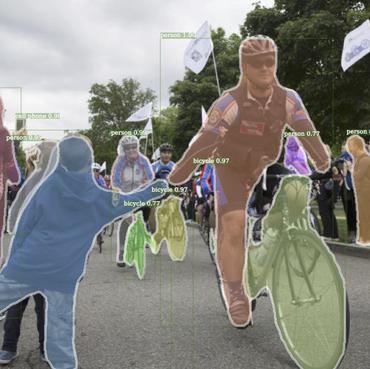Visual Translation Embedding Network for Visual Relation Detection
Visual relations, such as "person ride bike" and "bike next to car", offer a comprehensive scene understanding of an image, and have already shown their great utility in connecting computer vision and natural language. However, due to the challenging combinatorial complexity of modeling subject-predicate-object relation triplets, very little work has been done to localize and predict visual relations. Inspired by the recent advances in relational representation learning of knowledge bases and convolutional object detection networks, we propose a Visual Translation Embedding network (VTransE) for visual relation detection. VTransE places objects in a low-dimensional relation space where a relation can be modeled as a simple vector translation, i.e., subject + predicate $\approx$ object. We propose a novel feature extraction layer that enables object-relation knowledge transfer in a fully-convolutional fashion that supports training and inference in a single forward/backward pass. To the best of our knowledge, VTransE is the first end-to-end relation detection network. We demonstrate the effectiveness of VTransE over other state-of-the-art methods on two large-scale datasets: Visual Relationship and Visual Genome. Note that even though VTransE is a purely visual model, it is still competitive to the Lu's multi-modal model with language priors.
PDF Abstract CVPR 2017 PDF CVPR 2017 Abstract








 ssd
ssd
 VRD
VRD
